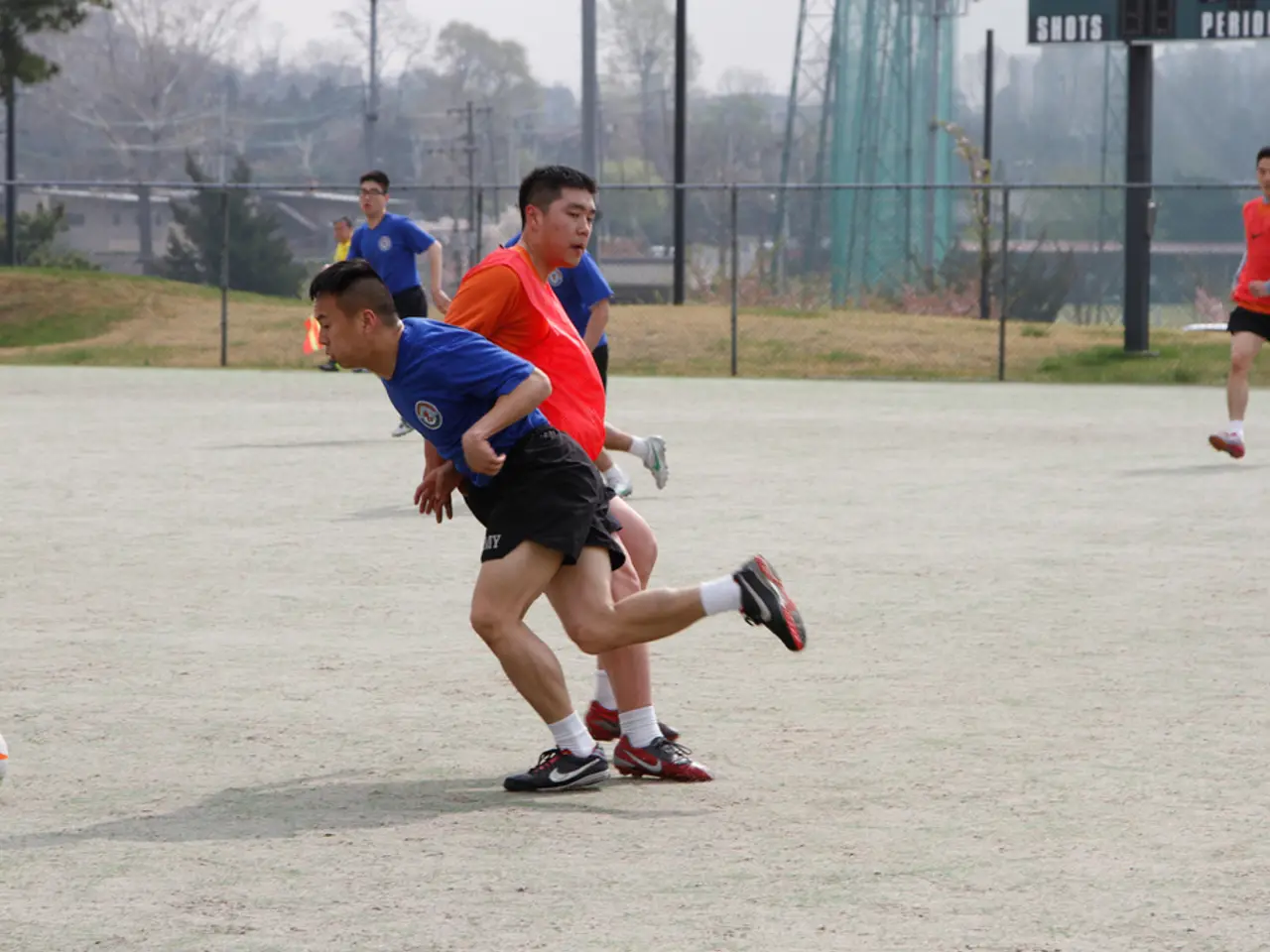Dealing with brain injuries in football doesn't rely on safety equipment.
Football, a popular sport played by millions worldwide, continues to grapple with the issue of concussions. Recent research and innovations aim to address this concern, but questions remain about their effectiveness.
According to studies, adult men typically recover from a concussion in about 25 days, while women may take 35 days. However, professional football players, such as those in the NFL, often return to play within nine days post-concussion. This stark contrast has raised concerns about the long-term effects of these injuries on players' health.
In the NFL, approximately 1,700 active players, 81,000 college students, and two million local youth participate in football each year. Hall of Famer Brett Favre, who sustained multiple concussions during his career, recently revealed his diagnosis of Parkinson's disease, a condition linked to repeated brain trauma.
Concussions are mild traumatic brain injuries that can cause a range of physical, cognitive, and emotional symptoms. Unfortunately, over one-third of American high schools lack athletic trainers, which can lead to young athletes relying on teammates, coaches, or parents to recognise and treat concussions appropriately.
To combat this issue, the NFL and companies propose measures such as improving helmet technology, enforcing stricter concussion protocols, reducing contact during practice, educating players and staff about brain injury risks, and funding research to prevent long-term effects from skull and brain injuries.
One such piece of equipment is the Guardian Cap, a helmet accessory designed to absorb and spread the force of a hit, purportedly by up to 25 percent. However, at least three independent studies have shown that the Guardian Cap makes no difference in reducing concussions. Uptake of the Guardian Cap among football players is also low, with an average of six players wearing it each week in the NFL and the Canadian Football League combined.
Another innovation is the Q-Collar, a Food and Drug Administration-approved device designed to minimise brain movement inside the skull. The Q-Collar works by applying pressure to the jugular veins to slow blood flow out of the head, increasing blood around the brain and cushioning it. However, critics note that we don't know if the Q-Collar actually protects the brain from future harm.
Despite these concerns, the creators of the Q-Collar claim it reduces brain movement within the skull after impact. Interestingly, a 2022 study found that woodpeckers' brains are protected from damage due to their size and orientation within their skulls, not due to the Q-Collar's design.
In light of these findings, it's clear that more research is needed to fully understand the impact of these protective measures on the prevention and recovery from concussions. As football continues to be a beloved sport, it's crucial that we prioritise the safety and wellbeing of its players.
Read also:
- Lu Shiow-yen's Challenging Position as Chair of the Chinese Nationalist Party (KMT) Under Scrutiny in Donovan's Analysis
- Indian Prime Minister Modi embarks on a seven-year absence trip to China; encounters Xi Jinping and Vladimir Putin amid escalating U.S. tariffs.
- Voters in Germany are urging Friedrich Merz to apply pressure on Israel
- Enemy Forces Have Taken Ukrainian Prisoner








